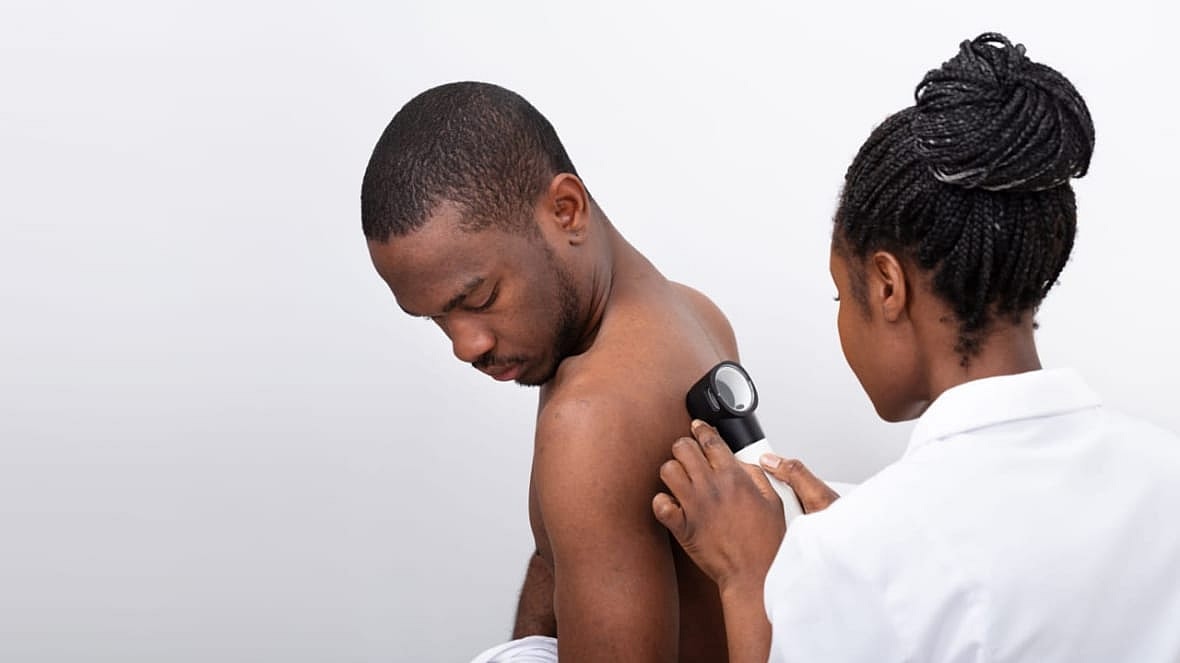Black males are more likely to get skin cancer in unexpected areas, such as their toes and fingernails, making melanoma a much more dangerous disease for them.
The Journal of the American Academy of Dermatology released the analysis of over 205,000 cases on Tuesday. According to The Washington Post, researchers evaluated diagnosis data from the National Cancer Database for men of white, Black, Asian, American Indian/Alaska Native and Hispanic ancestry from 2004 to 2018.
Although white men are much more likely to develop melanoma, the study found that Black men suffer a 26 percent higher mortality rate. Despite making up only 2.5 percent of the study’s more than 200,000 male participants, Black men’s survival rates were much lower than those of white males.

Co-author Ashley Wysong, a medical doctor and chair of dermatology at the University of Nebraska Medical Center, explained that the study aimed to go deeper into the reasons behind the variations in survival rates and the factors that might be causing them.
She noted that people frequently disregard melanomas on their fingers, toes, palms and soles of their feet because they think they are benign illnesses, like warts or fungus. They may resemble flat, pink, gray, brown or black lesions.
“Most people don’t think of skin cancers in their nails or on their hands and feet,” Wysong said, The Post reported. “So we see delays in diagnosis because of the location. It’s hard to see. Most people don’t know what a nail melanoma looks like.”
The higher mortality rate of melanoma in Black men can partially be explained by late diagnosis. Although the study considered an array of variables — including income, insurance, access to healthcare and education level — Wysong said these factors “don’t fully explain why Black men would have a 26 percent higher death rate than Whites.”
It does, however, imply that biological factors are in play.
Compared to 21.1 percent of white men, 48.6 percent of Black men with melanoma are diagnosed when the disease is already advanced and more challenging to treat.
Melanoma distribution on the body differed significantly by race. According to the study, lower extremities account for 50.7 percent of melanoma cases in Black men. Less than 10 percent of affected white men have the condition on their lower bodies.
Most instances affected the head and neck — 25.7 percent — or the trunk — 35.5 percent — in white men. Comparatively, 12.6 percent and 9.8 percent of Black men’s cases involved the chest and head, respectively.
After receiving a melanoma diagnosis, more than 75 percent of white males live for five years or longer; 51.7 percent of Black men do.
Long-standing research has shown men are more likely than women to develop and die from the disease. However, the new study is the broadest examination of how racial differences in the site, stage and prognosis of male melanoma are explored.
In the last 10 years, there has been a 27 percent increase in the annual number of new invasive melanoma cases diagnosed. According to the Skin Cancer Foundation, 58,120 men and 39,490 women will be diagnosed with invasive melanoma in the United States in 2023, totaling 97,610 cases. A total of 7,990 deaths from melanoma are anticipated this year, and 5,420 will be men.
Dermatologists continue to emphasize sun protection because most melanomas are caused by UV damage to skin cells. Wysong noted that men frequently oppose wearing hats, sunscreen, protective clothes, avoiding the sun and visiting a dermatologist regularly — precisely the things that could save their lives.
Jeremy Brauer, a physician and clinical associate professor of dermatology at NYU Langone Health who was not involved in the study, said it’s critical to increase public awareness of the need for doctors and patients to be alert for melanoma, even in Black patients, where it is uncommon.
Brauer pointed out that doctors are frequently taught to recognize skin cancers on white skin and may not be aware of how the disease manifests differently in different races, adding that the “disproportionate and unfortunate rate of death means we have to try to be much more preventative.”
David J. Leffell, a professor of dermatology and surgery at Yale University’s medical school and a specialist in skin cancer and melanoma, suggested that hormonal variances across all males could account for the gender discrepancy in melanoma. He asserted that the new findings should raise much-needed melanoma awareness in Black men.
“There hasn’t been a focus on this, and when there isn’t that focus, there isn’t the research funding,” said Leffell, The Post reported. “So I think that the article is going to shine some attention on the need to fund research in that area. And who knows? By paying more attention to the less common categories within melanoma, we may come to understand melanoma better in general.”
TheGrio is FREE on your TV via Apple TV, Amazon Fire, Roku and Android TV. Also, please download theGrio mobile apps today!

